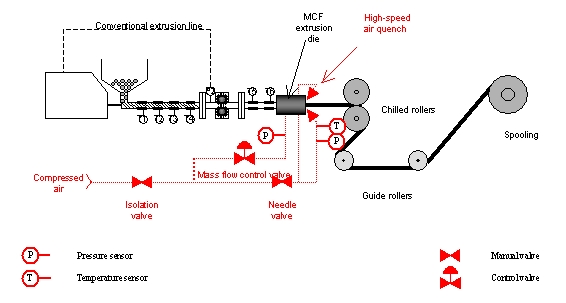Low Voidage Manufacture
The original MCF that was developed is now termed 'low voidage' or 'standard' MCF. This material contains roughly 10% to 15% voidage and is produced using an extrusion process. Extrusion of MCF uses standard polymer processing extrusion machinery and standard conditions coupled with a novel design of extrusion die. A schematic diagram of the extrusion line is shown below.
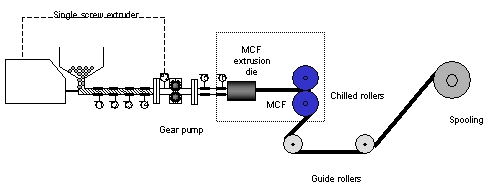 |
In use, polymer pellets are loaded into the extruder's hopper and then these are conveyed along a heated barrel by a screw. The polymer melts and the action of the screw results in a homogeneous polymer melt that is then conveyed along the rest of the heated extrusion line by means of a gear pump. This goes to ensure that the flow-rate of polymer entering the extrusion die is effectively constant and surge free. The design and fabrication of the extrusion die is one of the key innovative elements within this process, and a schematic diagram of the extrusion die and quench system is shown below.
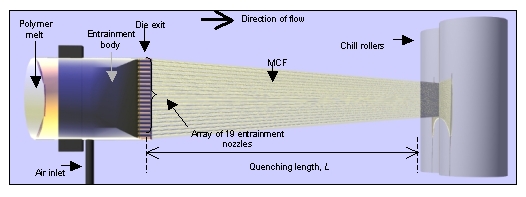 |
The principle of operation of the MCF extrusion die is very simple. When the polymer flows over the entrainment nozzles, a small area of low pressure is created underneath the tip of each nozzle. This allows air at atmospheric pressure to be sucked into the polymer melt via the air inlet. The resultant extrudate now contains capillaries!
The latest generation of the MCF extrusion die is pictured below. This die was fabricated using the latest erosion technology and machining techniques. The injector was fabricated from one piece of 316 stainless steel both to maximise robustness and to maintain the precision location of each injector tip to within 10 microns.
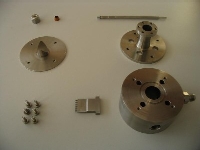 |
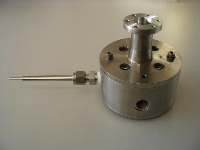 |
|
The component parts of the |
The assembled Mark IV |
High Voidage Manufacture
The high voidage process uses all the elements of the extrusion process that are used for the standard, or low voidage, MCF process uses. However, there are a couple of vital additions that are outlined in red on the diagram below.
tbody>
|
|
The key difference with the high voidage process is the careful introduction of pressurised air into the MCF extrusion die, coupled with careful control of quench and hauling conditions. Successful manipulation of these critical parameters, coupled with careful polymer selection, enables the product range produced by the standard MCF production line to be expanded, both in terms of variety and morphology! MCFs have been successfully produced using these techniques that contain voidage in excess of 60%. The cross sections below illustrate the morphology of MCFs with a voidage of (a) 60% and (b) 40%.
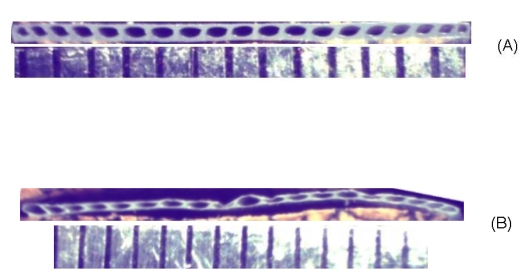 |


